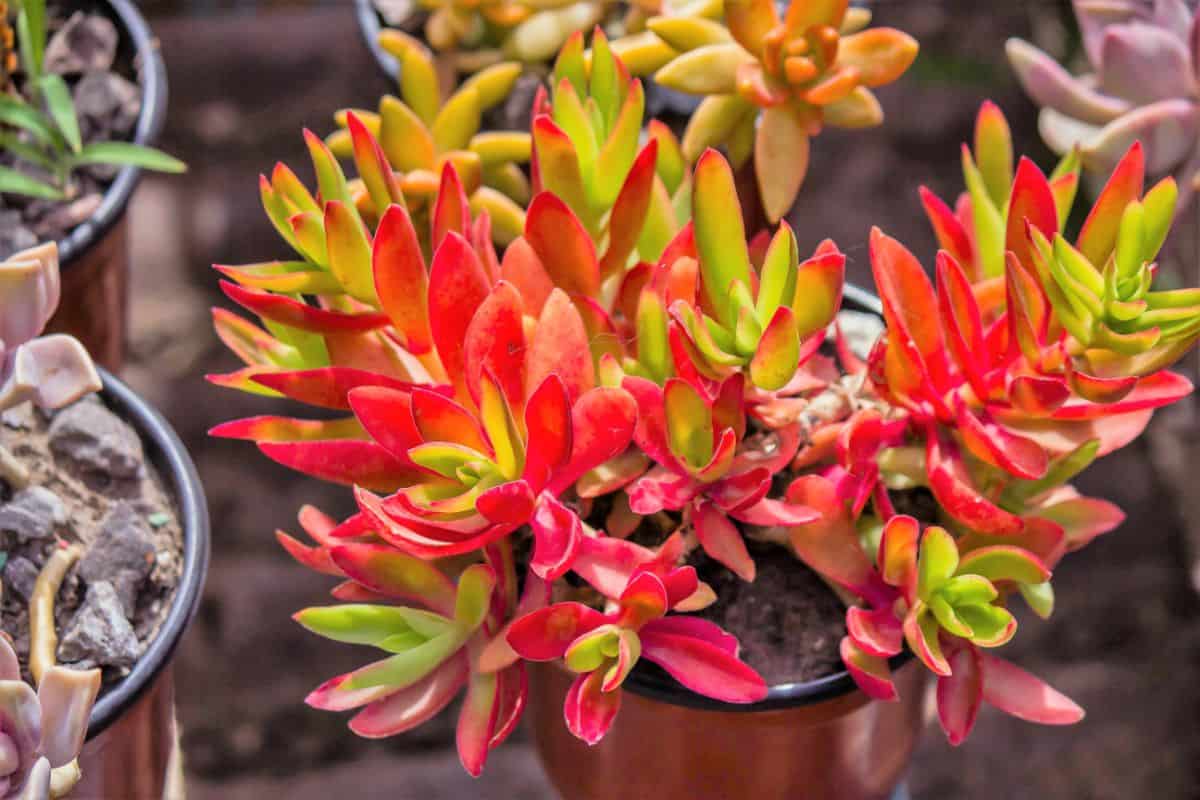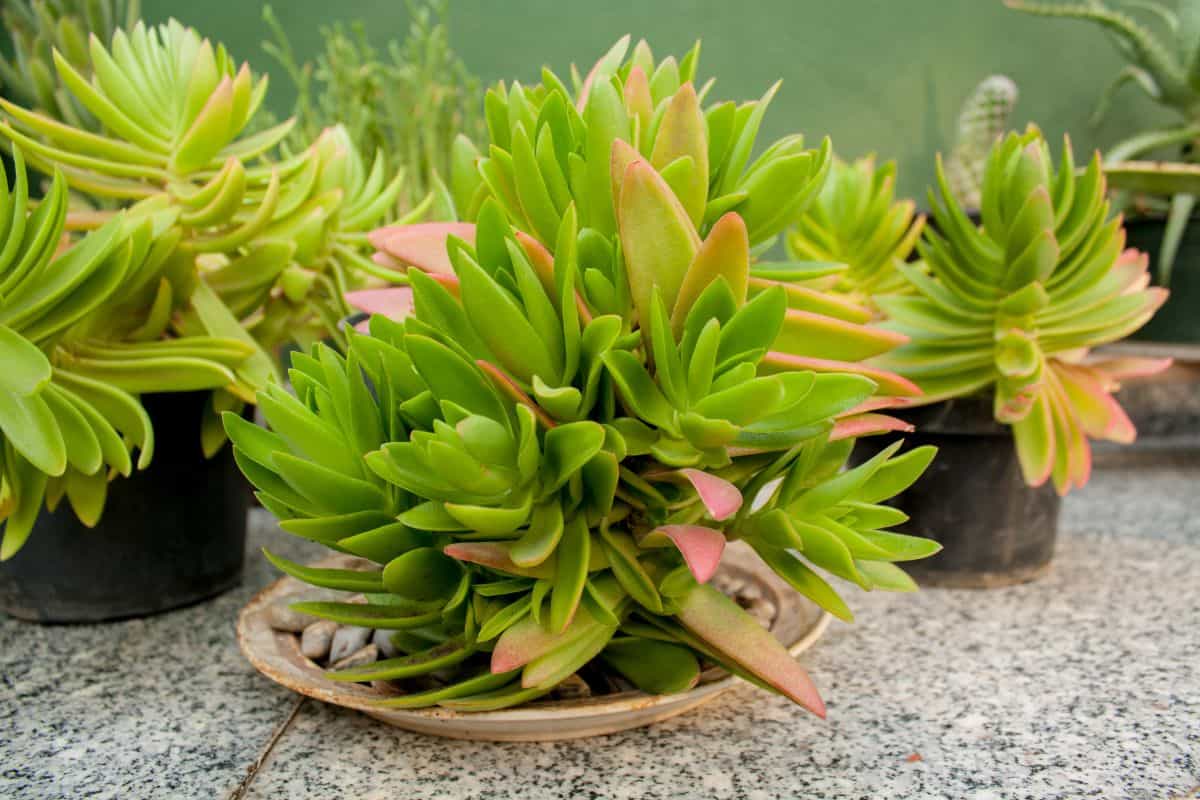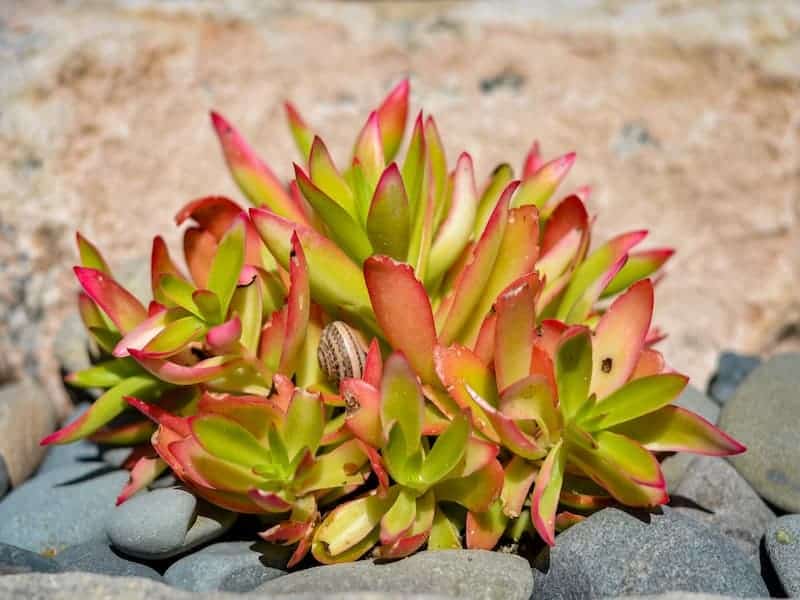The Crassula capitella campfire is a succulent that is native to certain regions in Southern Africa. It can be found in three of South Africa’s nine provinces, and is also seen in certain parts of Botswana and Namibia. It gets its name Crassula capitella campfire from its leaves that look almost like flames.

Their leaves start off a pale green in color, but turn red from prolonged sunlight. Their glorious hue of pinkish-red makes a magnificent show in flower beds, and in flower arrangements.
These plants are not terribly hardy and need to be looked after carefully in order to ensure their survival and growth.
Jump to:
Crassula Capitella Campfire Appearance
| Name: | Crassula capitella campfire |
| Soil: | Well-drained soil |
| Blooming: | Summer |
| Light: | Full sun to partial shade |
| Water: | When the soil is completely dry |
| Propagation: | Cuttings and offseats |
The Crassula capitella campfire has a long, thin, pointed leaf that is shaped a little like a propeller. They tend to grow on top of each other, in a rosette-like formation, with bigger leaves at the bottom and smaller leaves overlapping on top.
Their color is spectacular. They start off a very pale shade of green to lightish yellow, but as they spend more time in bright sunlight, they change color. They will gradually move through different shades, going from green or yellow to pale pink, brighter pink, and eventually will be bright red. They need to be kept in the sun for as long as possible in order to retain their brilliant color.

Buy it from:
The plants are not very big and will grow to a maximum height of 6 inches. The stems will spread out, and they will cover a fairly large area of ground if left to grow untrimmed. They can often spread as wide as 3 feet.
When the stems lie on the ground, they can form new shoots at the internodes, which are the spaces between the nodes of the stem. These new shoots can take root and help the plant to spread further.
The Crassula capitella campfire is a biennial plant, which means that it takes two years to complete a flowering cycle. It will bloom through summer. The flowers are small and white, and are shaped like stars.
This particular succulent is monocarpic, meaning that it will only flower once, and then die off. However, the new stems that come up from the offshoots will then grow and flower.
Caring for the Crassula Capitella Campfire
Unlike certain other succulent species, the Crassula capitella campfire is not very hardy, and needs to be nurtured carefully.
Light
The Crassula capitella campfire is a plant that likes almost full sun, with only a little shade. If you are planting it outdoors, choose a warm spot in your garden that gets full sun to partial shade.
No products found.
If you want to keep a Crassula capitella campfire as an indoor plant, it will be happiest on a sunny window sill.
If you want to keep it as an indoor plant, but you do not have a room that gets enough sun, it will also do well if you use a grow light to provide extra light and warmth.
Outdoor sunlight is a lot harsher than indoor natural light. If you decide that you would like to change it from an indoor plant to an outdoor one, you should make the change gradually, in order to prevent trauma to the plant.
Take it outside initially for only an hour or two, and every day increase the length of time that it is exposed to outdoor sunlight until it is used to the outdoor conditions. In this way, the plant adapts slowly to the different environment.
Water

The Crassula capitella campfire is a succulent that does not need a lot of water. It should only be watered very infrequently. Check how dry or damp the soil feels before watering.
You should not have to water more often than once a week. In very hot, dry conditions, you could possibly water every 4-5 days.
If you have planted your Crassula capitella campfire in pots, it is important that your pots have sufficient drainage holes at the bottom. If the water cannot drain adequately, the roots will rot from sitting in water for too long, and the plant will die.
An effective method of watering is to place the pot in a saucer of water, and allow it to stand for a few hours. The roots will ‘suck up’ the water through the drainage holes, absorbing only as much as they can take. However, you should not leave the pot standing in the water for more than a few hours.
Temperature
The Crassula capitella campfire cannot survive extreme cold, and should not be exposed to heavy frost. If this plant is left in temperatures below 30° Fahrenheit, it will most likely not survive.
If there is a risk of freezing temperatures overnight, it is best to bring your plants indoors to protect them from the cold.
Crassula capitella campfire will thrive if kept in very warm conditions. If keeping them as indoor plants, try to keep them in a room where the temperature is more or less constant. They do not adapt well to sudden changes in temperature.
Soil
When it comes to their soil, succulents are different from other plants. It is important to make sure that you have the right kind of soil, in order to prevent some common problems.
Like most succulents, the Crassula capitella campfire needs soil with good drainage in order for the roots to flourish. The soil should be fairly light, and needs substantial sized pores to allow air to circulate freely.
The soil should contain essential elements for nourishing the plant. The best soil to use for Crassula capitella campfire is something with a combination of coarse sand, pumice, and perlite, combined with cactus potting soil. You should have a ratio of one part potting soil to one part mineral grit.
See Related Article: Calico Kitten (Crassula Marginalis Rubra) Succulent Care Guide
Propagating Crassula Capitella Campfire

The Crassula capitella campfire is a succulent that is quite easy to grow. They can be successfully propagated by offsets, leaf cuttings or divisions.
If you want to propagate new plants by dividing your existing plants, the best time to do this is as new growth is starting to emerge, usually in spring.
To divide the plant, dig out a clump using a very sharp spade. Cut the roots by using the spade to cut downwards on the sides of the clump. You can then repot these and grow a whole new plant.
If you want to propagate by using offsets, cut a piece from the main plant, at the base of the stem. Allow it to dry for a few days, in order for the cut edge to heal.
Insert the cut stems into a new pot of potting soil, and water lightly. They will soon take root, and before long a new plant should grow.
The easiest method of propagating Crassula capitella campfire is with leaves. Carefully remove four or five healthy-looking leaves. Try to twist them off as close to the stem as possible.
Allow the leaves to dry for 2-3 days. Then place them in some potting soil in a small dish. Sprinkle with a little water, and leave to stand, covered, for a few days. After 4-5 days the leaves should start sprouting and tiny shoots will appear. You can then plant these in pots with good quality cactus potting soil, and your new plant will be well on its way.
Common Pests And Problems With Crassula Capitella Campfire

There are numerous issues that can have a negative effect on your Crassula capitella campfire, and cause it to wilt and die. These plants are very vulnerable and need to be checked often to make sure that they are not suffering from any of these issues.
You May Also Like: Crassula Calico Kitten Succulent Care Guide
Pests
As with all plants, the Crassula capitella campfire is at risk of being invaded by bugs. Aphids and mealybugs are a common problem. If your plant starts to look discolored, or the leaves start developing tiny holes or pock marks in them, you should examine the plant carefully.
Mealybugs are tiny little insects that will leave a whitish coating on your plants. They usually take hold on the underside of the leaves. If left to their own devices, they will soon multiply, and start munching their way through your precious plant.
The best way to treat mealybugs is with rubbing alcohol. You need to spray it directly onto the leaves. The alcohol won’t harm the plant, but it will kill the bugs.
Over-watering
Another common problem is over-watering. If your plant’s leaves start turning brown and become soft and mushy, it basically means that they are drowning. Too much water prevents the plant from being able to breathe, and it will start to rot.
If this happens, placing the plant in a hot, sunny spot will usually help it to recover.
Sun Damage
Even though these plants love sunlight, if they are in intensely hot sunlight for too long, the leaves can get sunburnt. Move the plant to a shady spot and water well, and it should recover.
Sources:
https://mountaincrestgardens.com/crassula-capitella-campfire-limited


